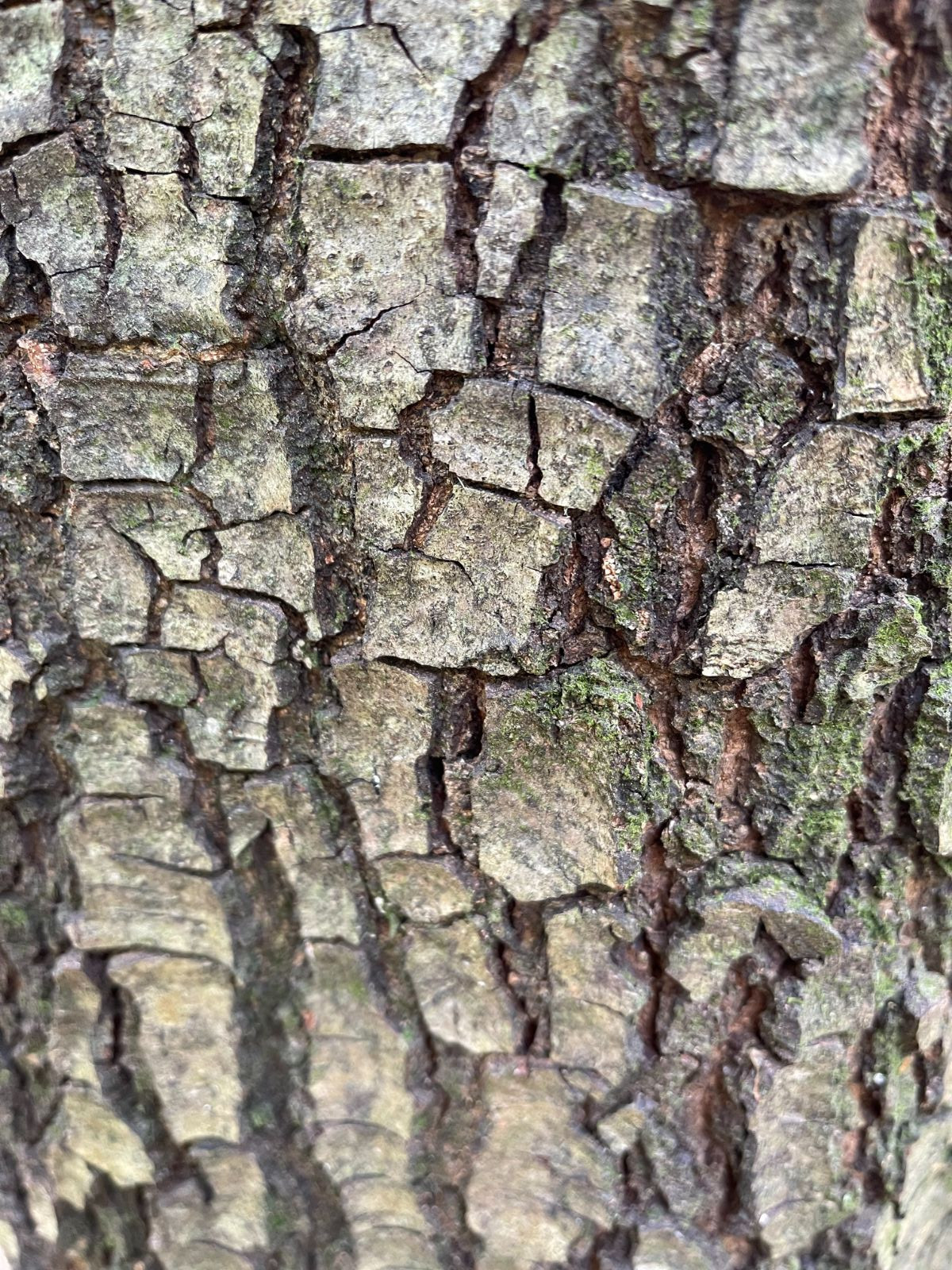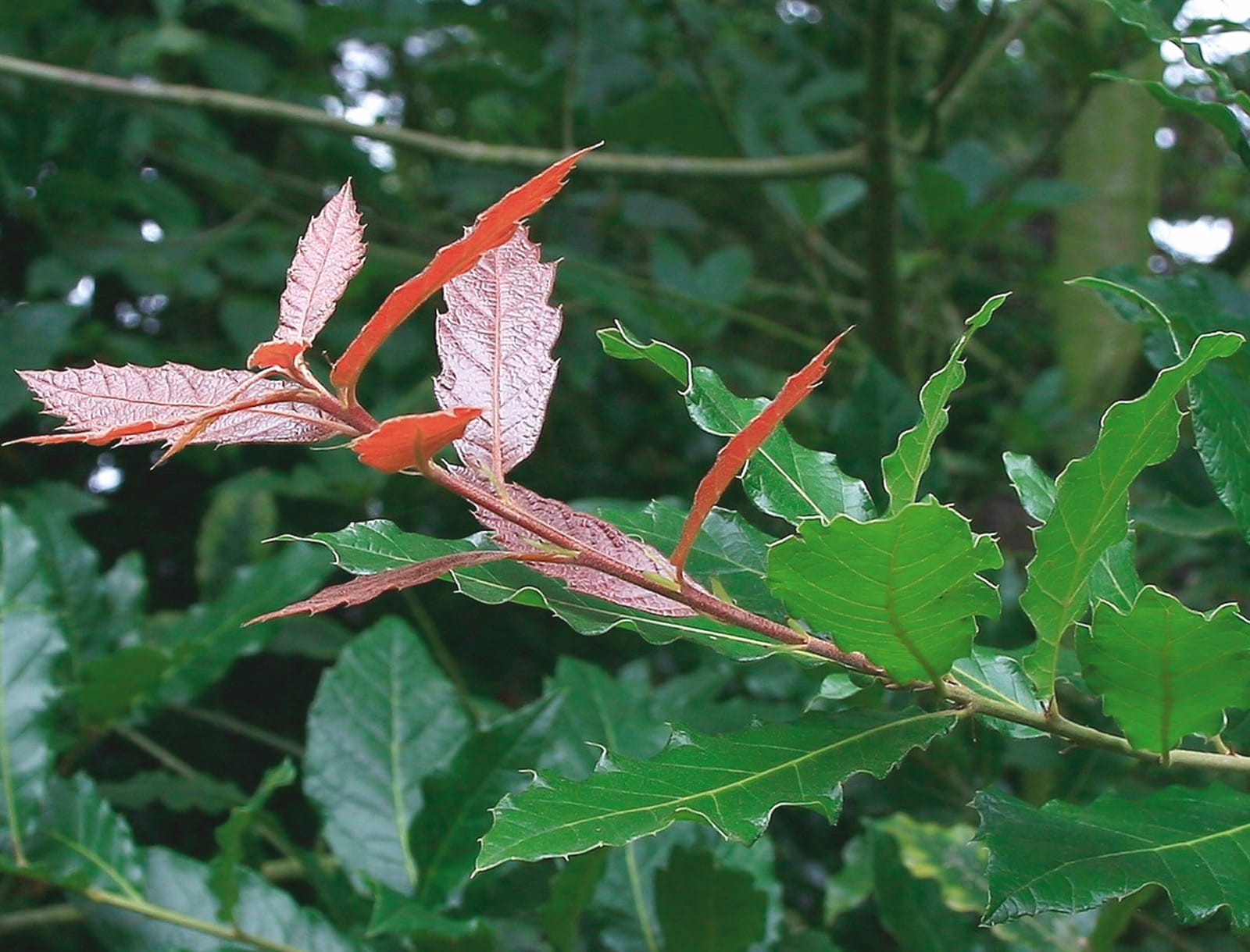Quercus rysophylla
Sponsor
Kindly sponsored by
The Trees and Shrubs Online Oak Consortium
Credits
Article from New Trees by John Grimshaw & Ross Bayton
Recommended citation
'Quercus rysophylla' from the website Trees and Shrubs Online (treesandshrubsonline.
Genus
- Quercus
- Subgen. Quercus, Sect. Lobatae
Common Names
- Loquat-leaf Oak
Other taxa in genus
- Quercus acerifolia
- Quercus acherdophylla
- Quercus acrodonta
- Quercus acuta
- Quercus acutifolia
- Quercus acutissima
- Quercus afares
- Quercus affinis
- Quercus agrifolia
- Quercus alba
- Quercus aliena
- Quercus alnifolia
- Quercus aquifolioides
- Quercus arizonica
- Quercus arkansana
- Quercus aucheri
- Quercus augustini
- Quercus austrina
- Quercus × auzendei
- Quercus baloot
- Quercus bambusifolia
- Quercus baronii
- Quercus bicolor
- Quercus brantii
- Quercus buckleyi
- Quercus canariensis
- Quercus canbyi
- Quercus candicans
- Quercus castanea
- Quercus castaneifolia
- Quercus cerris
- Quercus chenii
- Quercus chrysolepis
- Quercus coccifera
- Quercus cocciferoides
- Quercus coccinea
- Quercus conspersa
- Quercus crassifolia
- Quercus crassipes
- Quercus delavayi
- Quercus dentata
- Quercus deserticola
- Quercus dolicholepis
- Quercus douglasii
- Quercus dumosa
- Quercus durifolia
- Quercus eduardii
- Quercus ellipsoidalis
- Quercus emoryi
- Quercus engelmannii
- Quercus engleriana
- Quercus euboica
- Quercus eugeniifolia
- Quercus fabri
- Quercus faginea
- Quercus falcata
- Quercus floribunda
- Quercus frainetto
- Quercus franchetii
- Quercus fruticosa
- Quercus fusiformis
- Quercus gambelii
- Quercus garryana
- Quercus geminata
- Quercus georgiana
- Quercus germana
- Quercus gilliana
- Quercus gilva
- Quercus glabrescens
- Quercus glauca
- Quercus graciliformis
- Quercus gravesii
- Quercus griffithii
- Quercus grisea
- Quercus guyavifolia
- Quercus hartwissiana
- Quercus hemisphaerica
- Quercus × hispanica
- Quercus hondae
- Quercus hypargyrea
- Quercus hypoleucoides
- Quercus ilex
- Quercus ilicifolia
- Quercus imbricaria
- Quercus incana
- Quercus infectoria
- Quercus insignis
- Quercus ithaburensis
- Quercus kelloggii
- Quercus × kewensis
- Quercus kiukiangensis
- Quercus laceyi
- Quercus laevis
- Quercus lamellosa
- Quercus lanata
- Quercus lancifolia
- Quercus laurifolia
- Quercus laurina
- Quercus × leana
- Quercus leucotrichophora
- Quercus × libanerris
- Quercus libani
- Quercus lobata
- Quercus lobbii
- Quercus lodicosa
- Quercus longinux
- Quercus longispica
- Quercus look
- Quercus × ludoviciana
- Quercus macranthera
- Quercus macrocalyx
- Quercus macrocarpa
- Quercus macrolepis
- Quercus marilandica
- Quercus mexicana
- Quercus michauxii
- Quercus mongolica
- Quercus monimotricha
- Quercus montana
- Quercus morii
- Quercus muehlenbergii
- Quercus myrsinifolia
- Quercus myrtifolia
- Quercus nigra
- Quercus × numidica
- Quercus oblongifolia
- Quercus obtusata
- Quercus oglethorpensis
- Quercus oxyodon
- Quercus pagoda
- Quercus palmeri
- Quercus palustris
- Quercus pannosa
- Quercus parvula
- Quercus petraea
- Quercus phellos
- Quercus phillyreoides
- Quercus planipocula
- Quercus poilanei
- Quercus polymorpha
- Quercus pontica
- Quercus prinoides
- Quercus pubescens
- Quercus pyrenaica
- Quercus rehderiana
- Quercus reticulata
- Quercus robur
- Quercus rotundifolia
- Quercus rubra
- Quercus rugosa
- Quercus sadleriana
- Quercus salicina
- Quercus sartorii
- Quercus × schneideri
- Quercus schottkyana
- Quercus semecarpifolia
- Quercus senescens
- Quercus serrata
- Quercus sessilifolia
- Quercus setulosa
- Quercus shumardii
- Quercus sinuata
- Quercus spinosa
- Quercus stellata
- Quercus stenophylloides
- Quercus suber
- Quercus subspathulata
- Quercus tarokoensis
- Quercus tatakaensis
- Quercus texana
- Quercus tomentella
- Quercus trojana
- Quercus tungmaiensis
- Quercus turbinella
- Quercus × turneri
- Quercus undulata
- Quercus utahensis
- Quercus utilis
- Quercus uxoris
- Quercus variabilis
- Quercus velutina
- Quercus virginiana
- Quercus vulcanica
- Quercus warburgii
- Quercus wislizenii
- Quercus xalapensis
Tree to 15 m, possibly much more in cultivation. Bark dark and rough, forming chunky blocks that are pale-surfaced at first, smoother above. Branchlets initially greenish, ridged, with brown stellate tomentum and silky hairs, later greyish brown, glabrous, with small pale lenticels. Leaves evergreen, 14–20 × 4–7 cm, lanceolate to ovate with an auriculate base, upper surface glossy and rugose with prominent sunken veins, lower surface largely glabrous, but with some pubescence along the midrib, immature leaves pinkish red, veins prominent, 15–20 secondary veins on each side of the midrib, margins undulate and revolute, entire or with shallow bristle-tipped teeth towards the apex, apex acute; petiole 0.5 cm long, glabrous. Cupule c.1 cm; scales obtuse, golden, appressed. Acorn with half of its length enclosed in the cupule, c.1.5 cm long, stylopodium short. Standley 1922, Trelease 1924. Distribution MEXICO: Hidalgo, Nuevo León, Querétaro, Veracruz. Habitat Dry, tropical forest, cloud forest, pine-oak woodland, gallery forest, between 400 and 2100 m asl. USDA Hardiness Zone 7. Conservation status Near Threatened. The known populations are small and fragmented. Illustration NT694, NT749. Taxonomic note When published, the spelling rysophylla was used, but this has often been ‘corrected’ to rhysophylla (including in Govaerts & Frodin 1998), and other orthographic variants have appeared. Asked to adjudicate before we went to press, Rafaël Govaerts decided (October 2008) that the original spelling should stand.
Of all the trees in this book, Quercus rysophylla is the one that has made the greatest impression on me (JMG) wherever it has been seen, and if only one ‘new tree’ were to be grown, this should perhaps be it. Fortunately – as it is of limited occurrence in the wild – it is now well established in cultivation and is regularly offered by the nursery trade as grafted specimens. The large, leathery, bullate leaves are its distinctive feature and are held in dense clusters at the ends of the shoots; in some individuals the late flush is a fabulous red, but in others it is less intense. Seed was first received at the Hillier Gardens in 1978 from a collection made by Lynn Lowrey, who was responsible for promoting its use (with Q. canbyi and Q. polymorpha) in the southern United States, especially Texas (Pickens 1999).
Another early introduction to the United Kingdom was a collection made in 1979 in Nuevo León by Sir Harold Hillier (Hillier 622), but it has since been collected on several other occasions. It is fitting that the finest individual seen in the research for New Trees is at the Hillier Gardens, on sandy soil near Brentry House, raised from Hillier 622 and now a great dense pillar 17.6 m tall (in 2008) and still growing vigorously. It is magnificent in all respects, even down to the deep layer of leaf litter around it, where the reddish brown persistent leaves are attractive in their own right. The bark is also good. There is another specimen from the same collection at Kew, which has made a fine tree of 10 m. In warmer climates it may perform still more impressively; Lamant (2004) mentions that at Arboretum Chocha, near Ustaritz, a tree planted in 1992 had attained a height of 12 m, dbh 22 cm, and was 6 m through at the time he wrote. Rapid, straight growth seems to be a feature of the species, although one specimen at the Hoyt Arboretum had its top bowed by snow and has continued to lean. It is said by Hillier & Coombes (2002) to require lime-free conditions, but in central Ireland it grows well in soils of pH 7.5–7.8 (J. Ravensberg, pers. comm. 2006). A comparison of the performance in cultivation of Q. rysophylla and Q. polymorpha, which grow together in the wild, is an instructive lesson in the differences between red and white oaks.
As Q. rysophylla becomes more familiar, selections are being made and propagated either by grafting or as cuttings. ‘Maya’ is said to be a good selection, made by M.M. Bömer, with particularly fine red new leaves, and foliage suitable for the cut-flower market (J. Ravensberg, pers. comm. 2006). Many trees grown from garden-collected seed are hybrids with other red oaks, and care should be taken to obtain the ‘real thing’. One specimen found in 1992 by Allen Coombes at Karaca Arboretum in Turkey in 2002 is apparently a hybrid with Q. falcata; this has been propagated by Pavia Nursery, Belgium and named Q. ‘Zehra’. Some of the plants distributed from Peckerwood Garden, Texas derive from a naturally occurring hybrid between Q. rysophylla and Q. sartorii (A. Coombes, pers. comm. 2007).





